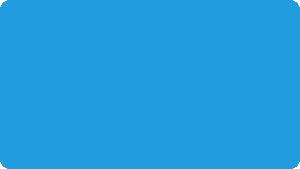Showing no signs of slowing, a recent Statista report forecasted that the software as a service (SaaS) market is expected to grow at an annual rate of 7.33% (CAGR 2024 – 2028), reaching $374.50 billion by 2028. However, when it comes to managing recurring billing, revenue recognition, plan renewals, etc., companies doing SaaS billing face hurdles in achieving their full revenue potential.
Understanding SaaS Billing
Billing and invoicing consists of several steps, including accumulating costs, generating the invoice (manually or automatically), sending the invoice (printed or electronically), receiving payments, reconciling payments, handling collections, accounting for payments, and more. So, what makes this seemingly straightforward process more complex for SaaS companies?
The recurring nature of invoicing and receiving payments adds a layer of complexity not found in one-off sales transactions. While the traditional concept of invoicing/receiving payments is still present, it’s the invoicing and payment structures, flexible pricing models, regulatory compliance requirements, and revenue reporting that makes SaaS billing more complex. To gain a deeper understanding of the uniqueness found in SaaS billing, let’s look at it through the lens of challenges SaaS businesses face, and how they can turn these challenges into opportunities.
Turn SaaS Billing Challenges into Opportunities
Whether a small or midsize business or large enterprise, you need to deliver value to keep your revenue flowing. However, in an industry that’s riddled with billing pitfalls, this is typically easier said than done. To put you on the road to SaaS billing success, we’ve highlighted the top 12 SaaS billing challenges and how billing best practices can turn these hurdles into competitive advantages.
1) Handling complex billing processes
Challenge: From initial customer onboarding to payment collection, there’s numerous processes that need to take place and they need to be executed quickly and with precision. If you’re handling billing manually or using outdated billions software, chances are there are delays and errors which often affect customer satisfaction.
Best Practices: A billing system built for SaaS billing complexities enables you to streamline billing processes, reduce or even eliminate errors, and ensure accurate invoices are sent on a timely basis – facilitating prompt payment, reducing revenue leakage, and improving customer loyalty,
2) Managing customer relationships
Challenge: From the moment a prospect becomes a customer, you need the ability to track a variety of activities such as activations, trials, upgrades, downgrades, suspensions, payments, early terminations, etc. Manually handling these processes is daunting – to say the least. A misstep on any of the processes can lead to customer churn, as well as negatively affect the bottom line.
Best Practices: To deliver the exceptional service your customers expect, you need the ability to easily tailor your offerings and prices – without IT involvement. Tracking and managing activations, usage, upgrades, downgrades, billing cycles, accounts receivables, etc., is complex. By streamlining this process with a billing system that automates the entire quote-to-cash process, you’re able to better manage customer relationships, customize payment terms, identify receivable trends, and deliver the outstanding experiences your customers expect, while increasing profitability.
3) Keeping customers engaged
Challenge: In the SaaS world, complexity is inherent – not just for the company itself but for your customers. Many customers struggle with obtaining the information they need to make informed decisions on products, services, and pricing models. And when purchases are made, customers need fast and efficient ways to interact with your company to ask questions, upgrade/downgrade services, start a service, end a service, make payments, etc.
Best Practices: By providing customers with an intuitive self-service portal, you’re able to share information with your customers quickly and effortlessly. Empowering customers through self-service not only enhances customer relationships, but it also enables you to lower costs and operate more efficiently. For instance, the right SaaS billing system will allow your customers to view account information and usage, pay invoices, update their payment information, and much more. Additionally, given customers’ fluctuating service needs, a billing system built for recurring revenue enables you to accurately track service changes and consumption, as well as conveniently deliver invoices that are accurate and timely.
4) Managing product bundles
Challenge: Although the number of product bundles offered by SaaS companies varies, the average is 3.5. However, many SaaS companies supplement their offerings with a la carte options and hybrid billing models. While increasing the number of bundles may be inevitable to gain a competitive advantage, this strategy may complicate purchasing decisions, increase the complexity of product packages, and complicate billing processes.
Best Practices: A billing platform that enables unlimited pricing and rating capabilities, as well as provides the ability for you to easily design innovative and flexible bundles gives you the freedom to continually improve your offerings, quickly respond to industry trends, rise above the competition, and deliver the products customer’s desire.
5) Deploying flexible pricing plans
Challenge: Your customers’ needs are nearly as vast and varied as the number of customers you have. If we take this a step further by including fluctuating requirements, the ability to deliver diverse SaaS pricing can quickly become overwhelming. Not to mention it becoming resource and cost prohibitive.
Best Practices: You need the ability to quickly and cost-effectively design and deploy any number of simple to complex pricing tactics. All without disrupting your day-to-day operations. With comprehensive pricing flexibility you’re able to support any combination of pricing models, from per-user tiers to build-your-own bundles, and everything in between. A comprehensive SaaS billing system that provides point-and-click configuration combined with powerful workflow automation enables you to quickly bring your most ambitious and innovative pricing strategies to life.
6) Launching incentives
Challenge: Short-term sales programs such as discounts, promotions, and coupons can help grow your customer base and boost loyalty. If you’re still using a legacy system or trying to implement incentives manually, chances are you’re spending thousands of dollars each year on these initiatives – not to mention the manpower needed.
Best Practices: A centrally managed and automated billing platform takes the manual effort out of sales programs, enabling you to quickly add promotions, discounts, coupons, free trials, etc. to your product and services offerings.
7) Accelerating the delivery of accurate invoices
Challenge: With hundreds or thousands of customers, just managing the sheer number of invoices can over-burden your finance team. And when invoicing is delayed, contains errors, or inadvertently not sent, your ability to collect revenue is hampered.
Best Practices: A SaaS billing system that increases accuracy and automates invoice processing eliminates this labor-intensive task and puts your SaaS company on track to quickly collect the revenue you’ve earned.
8) Managing payment methods
Challenge: Unlike one-time purchases, the recurring revenue model of SaaS businesses lends itself to changing payment methods. For example, a customer may initially pay by check and later opt to use an online payment method. Additionally, customers want the ability to pay in the manner they are most comfortable with, whether that’s credit card, check, ACH, wire transfer, etc., and you need the ability to accept a variety of payment methods easily and accurately.
Best Practices: For accurate billing, you need a SaaS billing system that can 1) bill customers repeatedly every billing cycle, 2) accept a variety of payment methods, including check, credit/debit card, ACH, PayPal, wire transfer, etc., 3) proactively detect card expirations, upgrades, downgrades, etc. and automatically send notifications.
9) Recognizing revenue
Challenge: Revenue recognition for SaaS companies is not as straightforward as it is for more traditional business models. In addition to adhering to revenue recognition regulations such as ASC 606 and IFRS 15, you need to take into consideration several other factors such as revenue recognized over time, various billing methods, subscription additions, upgrades, downgrades, contractual commitments, and more.
Best Practices: With a billing platform that gives your finance teams total control over revenue recognition, you’re able to stay in compliance with ASC 606, IFRS 15, and other regulations, while realizing revenue as soon as possible. A SaaS billing system that combines billing and revenue recognition simplifies revenue management by assigning financial transactions and executing revenue recognition in real time – as events happen.
10) Managing failed payments
Challenge: When payments fail, whether it’s a result of non-payment or credit/debit card expirations, it’s important that you have the ability to quickly address the issue with the appropriate action.
Best Practices: To minimize involuntary churn and revenue leakage, you need a billing system that automates the dunning process, enables you to use the right mix of manual and automated actions, keeps customers informed of outstanding balances with automated notifications, and provides a comprehensive view of outstanding debt and collection strategies.
11) Using customer data
Challenge: You collect volumes of customer data that can be used to your advantage, like to refine your product offerings and pricing models, deliver personalization, monitor customer trends and much, much more. However, if your data isn’t put to use, you’re missing the chance to reduce churn, increase customer acquisitions, upsell/cross-sell, and keep revenue flowing.
Best Practices: The right SaaS billing platform can help you with all this (and much more):
- Use the data you already collect to better understand and track the impact billing and pricing changes have on customer and product demand – both short term and over the long term
- Understand how incentives can impact customer demand
- Project future revenue
- Reduce the impact of revenue ebbs and tides
- Gain real-time insights into how AR aging, days sales outstanding (DSO), and other collections metrics are trending for your business
- Help customers manage consumption
- Reduce churn and increase customer loyalty
12) Expanding your footprint internationally
Challenge: When taking your offerings across borders there are numerous considerations before the launch. To expedite your entry into new countries and to avoid complications that arise when expanding globally, your SaaS billing system must support localization.
Best Practices: To ensure that your expansion delivers on your internationalization objectives, such as customer and revenue growth, your SaaS billing system needs to have the ability to localize your offerings. Essentially, the billing system needs to support multiple languages, currencies, number fields, tax providers, payment providers, regional regulations, etc. In addition, the billing system must provide the capabilities to easily configure the user interface (UI), pricing, packaging, and invoices, as well as other documents to meet local requirements.
While the above provide top SaaS billing challenges and best practices to overcome hurdles, key for the financial health of your business is to proactively prevent revenue leakage. This is best accomplished with a SaaS billing system that automatically generates and sends invoices, reminds customers of upcoming payments, notifies customers of upcoming credit card/debit card expiration dates, and informs customers of overdue invoice.
Features and Functionality of the Best SaaS Billing Systems
SaaS billing is complex and filled with nuances, making it difficult for finance teams to understand all the financial and operational data that is scattered across the business. To reduce time to market, improve accuracy, and provide automation, your SaaS billing system needs the ability to seamlessly integrate with service delivery systems, financial systems, customer relationship management (CRM), enterprise resource planning (ERP), business process management (BPM), robotic process automation (RPA), general ledger, tax solution, and any other systems needed to automate the end-to-end billing and revenue management processes.
Other features and functionality you should consider include, the ability to offer multiple payment methods, ensures invoices are accurate, as well as easy to understand, provides the ability to automate billing tasks like invoice generation, payment, and account management, provides flexible pricing models, uses analytics tools, provides customer self-service portals, delivers automated dunning emails, and enables the efficient handling of customer disputes and refunds.
BillingPlatform provides all the above and more, including security and control, global support, reporting and insights. Our SaaS billing system is the only platform on the market that adapts to your unique monetization needs, enabling you to bring innovative products and services to market 30% faster and reduce operational spend by as much as 50%.
Unleash the Power of Your SaaS Business Model
Only an easy to use, yet sophisticated billing system can address the complex needs of your SaaS businesses. BillingPlatform provides a complete solution that enables you to leverage billing best practices to not only solve today’s SaaS billing challenges but be prepared for the uncertainties of tomorrow. BillingPlatform’s cloud-based software removes inherent complexities, simplifying the entire billing process.
With us, you’re able to respond to changing customer needs and industry trends on the fly, exceed customer expectations, minimize revenue leakage, and rise above the competition. Our open architecture, custom data model, and vast array of features enables you to take innovation to the next level, outpace the competition, and profitably grow your business. Every day, BillingPlatform gives SaaS companies the ability to achieve their highest level of revenue potential. If you’re ready to monetize SaaS offerings on your own terms and outpace the competition, request a demo to learn more.






